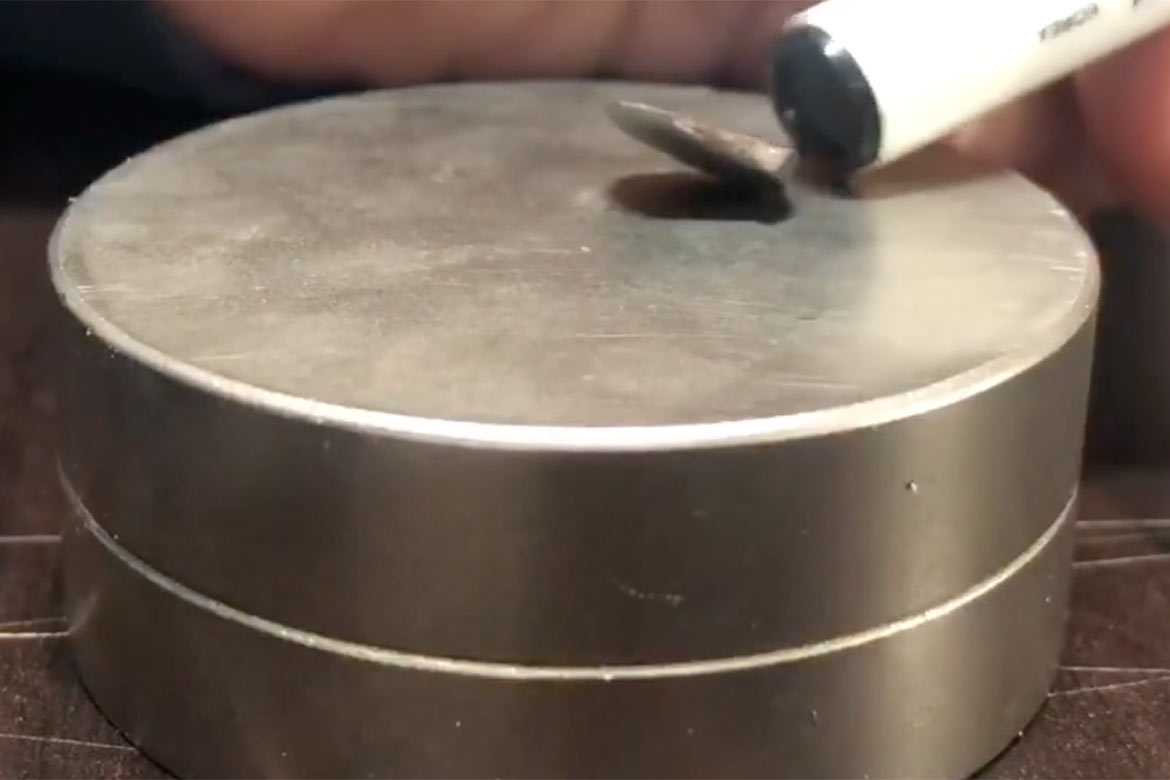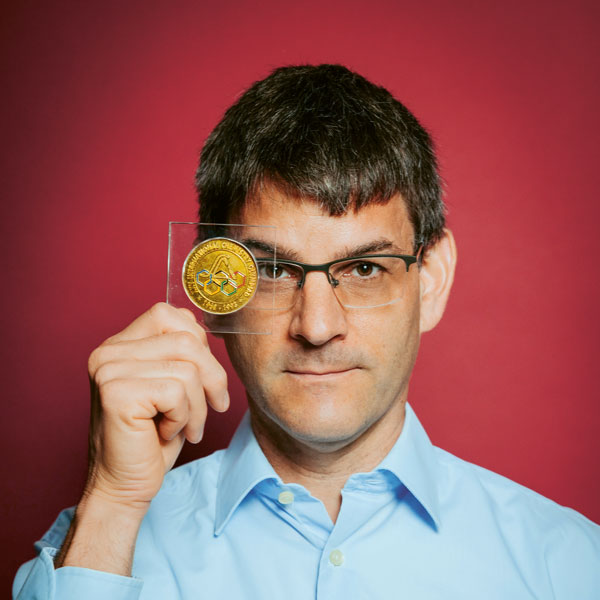SCIENCE LIVE
How a sham superconductor created physics fans
A purported superconductor has triggered a storm on social media – and it’s got some people excited about the physics of it.

A video supposedly demonstrates how the ‘superconducting’ material levitates over a magnet. | Image: Screenshot Sciencecast
This year, there was a storm on social media about the supposed discovery of a new superconductor. Three Korean researchers uploaded an article onto the preprint server Arxiv, describing a material called LK-99 that they claimed becomes superconducting at room temperature – in other words, it no longer displays any electrical resistance at all. Up to now, known superconductors have only ever demonstrated their amazing properties when they are cooled down to minus 196 degrees Celsius using liquid nitrogen. The authors of the paper on Arxiv were accordingly self-celebratory. “We believe that our new development will be a brand-new historical event that opens a new era for humankind”. They also released a video showing how their material levitates over a magnet, as would be typical for a superconductor.
There was a lot of excitement on social media. Amateur experts offered their comments, and academic researchers set out to replicate the experiment. One researcher even did it during a livestream. Countless videos circulated with supposedly levitating scraps of material. Parodies soon abounded too, like a ‘superconducting’ dog levitating happily in a swimming pool.
“Within two weeks of its uploading, it has been thoroughly debunked” says Philip Moriarty on YouTube. He’s a physics professor at the University of Nottingham in the UK, and he’s furious. “This is not how to do science”, he says. He’s convinced that the article was simply a cry for attention and contained fundamental errors that would be obvious to any first-year physics student. “The credibility of science keeps getting eroded”, he says. The authors of an editorial in the journal Nature Physics are of a similar opinion, believing that a classical peer review could have saved others all the effort that they expended into trying to replicate the experiment. There was one positive result, however: the video inspired an immense amount of curiosity in the technical, physical details. According to the editors of Nature Physics: “It would be ideal if the community could find a way to keep its new-found fans engaged”.




